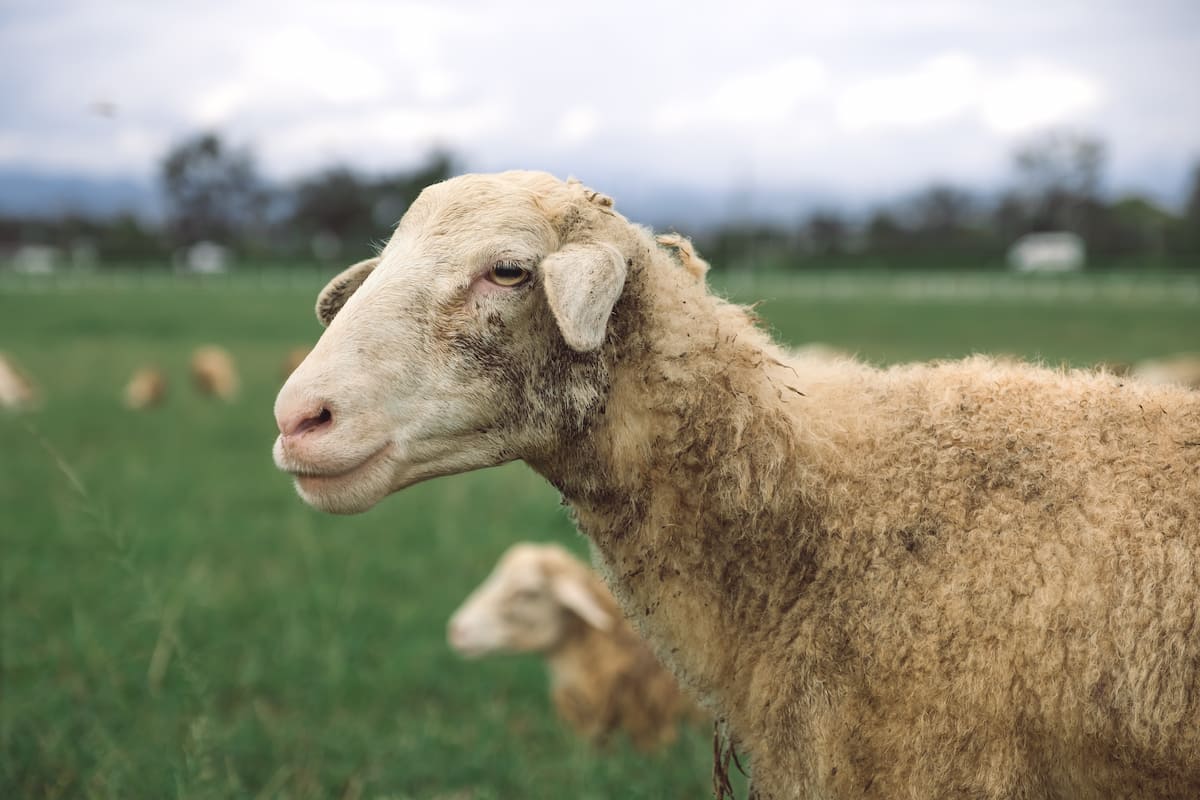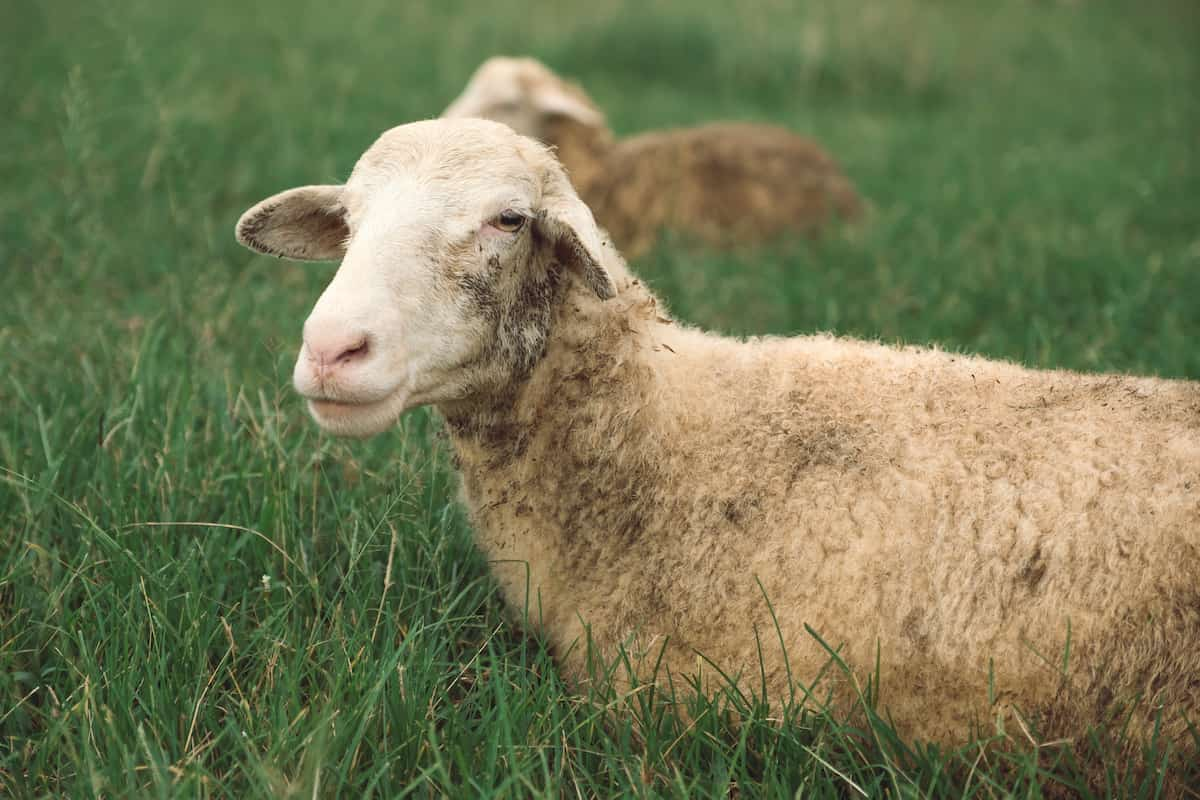Texel sheep are among the most commonly raised sheep in the commercial sector worldwide. Adaptable and capable of living anywhere, the breed can make a successful home anywhere. Moreover, they can blend with other sheep breeds, making it easier for ranchers. Since they thrive on natural vegetation in the highlands and pastures in the lowlands, the breed does not need heavy feeding. Their offspring inherit valuable traits when crossed with other breeds. Our goal in this guide is better to understand its appearance, characteristics, and other features.

Texel Sheep Facts
Varieties in Texel Sheep Breed
- Dutch Texel
- British Texel
- French Texel
Although these sheep have some minor differences- for instance, the British Texel is taller than the Dutch Texel, which is stocky with short legs, they all have outstanding muscle development and meat quality.
Texel Sheep Origin and History
As its name suggests, a Texel sheep originates from the Netherlands’ Isle of Texel. It is believed that this sheep originated in the nineteenth century. During this period, local farmers discovered a breed of sheep capable of growing large while eating very little. The Texel sheep was developed in the 1800s by crossbreeding this sheep with the Leicester Longwool and the Lincoln breed.
Breeders and farmers nationwide immediately became enamored with this breed of sheep when it was introduced to the US around 1985. Over the years, breeders have always focused on developing a breed that produces heavily muscled lambs with superior meat quality and low-fat dispositions throughout their bodies. The breed has grown in popularity in several countries, including Australia, the United States, and New Zealand.
Physical Characteristics of Texel Sheep Breed
- A distinctive feature of this sheep breed is its short, wide face topped off with a black nose.
- Its ears are short and widely spaced, while its carriage is almost horizontal.
- Despite not having been bred specifically for wool production, the Texel sheep produce plenty of it. This sheep produces medium-grade wool without black fibers.
- The hooves and noses of these animals are typically black.
- As medium-sized sheep, mature Texel ewes can weigh about 70 to 90 kg, while mature Texel rams can weigh 90 to 105 kg.
- Lambs sired by Texel have a remarkable growth rate. A Texel ewe’s milk yield is excellent after lambing, primarily due to its excellent milk yield.
- Texel lambs gain about 250 grams of weight per day on average. Lambs can weigh as much as 33 kilograms when weaned at 12 weeks.
- Texel ewes come into heat at about seven months of age and breed for about five months. Domestic sheep of this breed make excellent mothers who provide ample milk for their lambs. Sheep of the Texel breed is easy to lamb.
- Lambs and older sheep have a lifespan of 10 – 12 years, making them good meat animals.
Feed Requirements and Feed Plan for Texel Sheep Breed
Sheep graze on green grass during the summer, obtaining all the necessary nutrients. Animals are fed hay, steamed grains and cereals, steamed corn, and a mash of vegetables during the winter. Each day, it needs to be fed three times. A room with a temperature of 13 to 15°C is kept for ewes separately from livestock.
In case you missed it: Dorper Sheep Facts: Origin, Physical Characteristics, Size, Pros, and Cons

Diseases and Their Prevention in Texel Sheep Breed
The Texel sheep are hardy and resistant to disease. A warm sheepfold prevents pneumonia from developing. Eating the right diet will help prevent bloating. It is necessary to drive animals three times a year to remove worms. At least twice a year, sheep are treated with hooves and trimmed before going out to the pasture, after the stall period, and whenever necessary. Vaccinations prevent Bradzot, anthrax, brucellosis, and many other dangerous diseases. In the district veterinary service, vaccination marks and lists of vaccines administered are kept.
Reproduction of Texel Sheep Breed
It takes an animal nine to ten months to reach maturity. They are brought together when sheep and ewes are one and a half years old. September-January is the time when mating takes place. Sheep go through five months of pregnancy. Each litter has between one and three lambs, depending on the ewe’s age.
During delivery, a veterinarian must be present. Childbirth complications are common with Texel lambs due to their large heads. As soon as the lambs are born, they stand up, and within a day, they can follow their mother. Babies gain weight well during the first three months of life but lose it afterward.
Advantages of Raising Texel Sheep Breed
- The high quality of meat they produce makes Texel sheep so popular with breeders worldwide. It is often for this reason that we raise animals.
- Because Texel ewes are protective and produce high-quality milk, lambs have an excellent survival rate. It is easy for them to give birth to lambs.
- They produce high-quality wool even though the wool they produce isn’t the primary reason they are raised.
- The lambs of this breed reach an average weight of 22 kg by the time they are weaned at 12 weeks, which is a relatively fast growth rate.
- There is no doubt that this purebred sheep are a great addition to any farm. Additionally, they produce excellent wool and milk and a great growth rate.
- While they are among the best farm animals to raise due to their carcass quality and meat production, they are also profitable livestock for farming.
- A minimal amount of farming is required for Texel sheep. The species is a good forager with little-known diseases that could threaten their lives. Deworming your flock regularly and preventing common sheep pests like flystrike is essential.
- There is no climate or condition that the Texel’s body is incapable of withstanding. Horses with black hooves rarely suffer from foot rot because they are well-hardened. In open fields, however, animals can wear their hooves down sufficiently.
Disadvantages of Raising Texel Sheep Breed
- A lack of fertility and poor mothering abilities are some of their disadvantages.
- It is necessary to have a veterinarian present during lambing, especially for purebred Texel lambs.
- Lambs grow quickly but lose a lot of weight after three months.
In case you missed it: Sheep/Lamb Farming Success Story: Check How This Sheep Farmer Turned His Fortune

Conclusion
The Texel sheep breed is rapidly gaining popularity as a meat producer. This breed has an advantage over other sheep not just because of its fast growth and food efficiency but because of its muscle development, meat quality, and leanness. The best part is that even novice sheep farmers can easily raise them since they require little maintenance.
- Feed Your Flock for Less: Top 10 Tips to Save on Chicken Feed
- Ultimate Guide to Ossabaw Island Hog: Breeding, Raising, Diet, and Care
- Hatching Answers: The Top 10 Reasons Your Chickens Aren’t Laying Eggs
- Eggs and Economics: Breaking Down the Cost of Raising Backyard Chickens
- Defend Your Greens: Proven Methods to Keep Iguanas Out of Your Garden
- Ultimate Guide to Cinnamon Queen Chicken: A Comprehensive Guide for Beginners
- Ultimate Guide to California Tan Chicken: Breeding, Raising, Diet, Egg-Production and Care
- Ultimate Guide to Marsh Daisy Chicken: Breeding, Raising, Diet, and Care
- 10 Types of Chicken Farming Businesses You Can Start for Profits